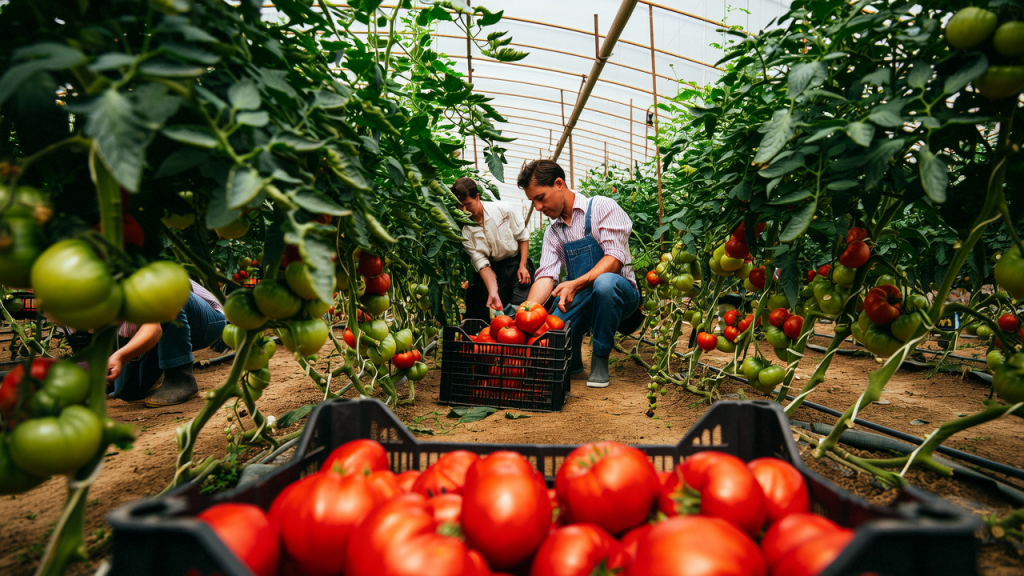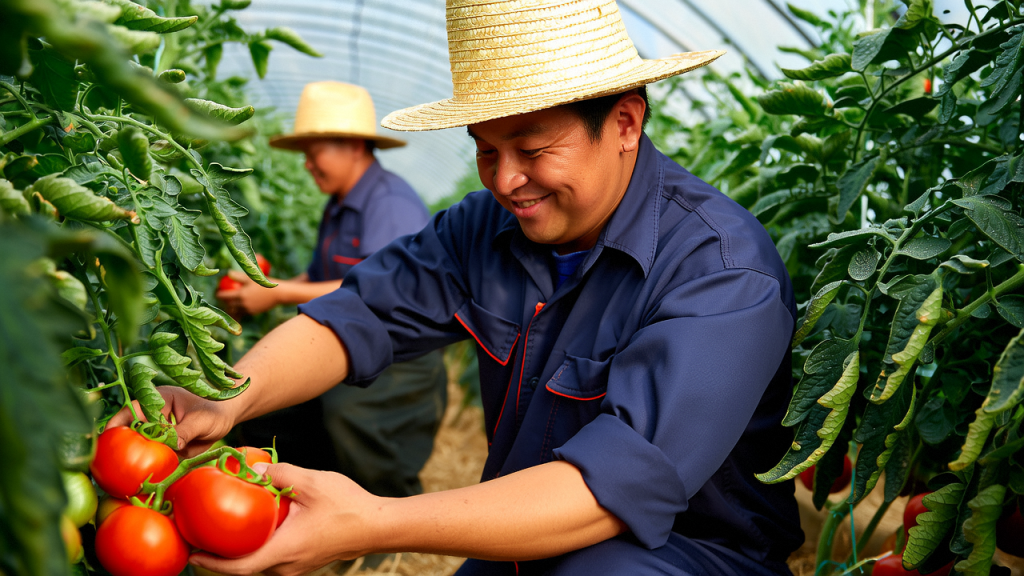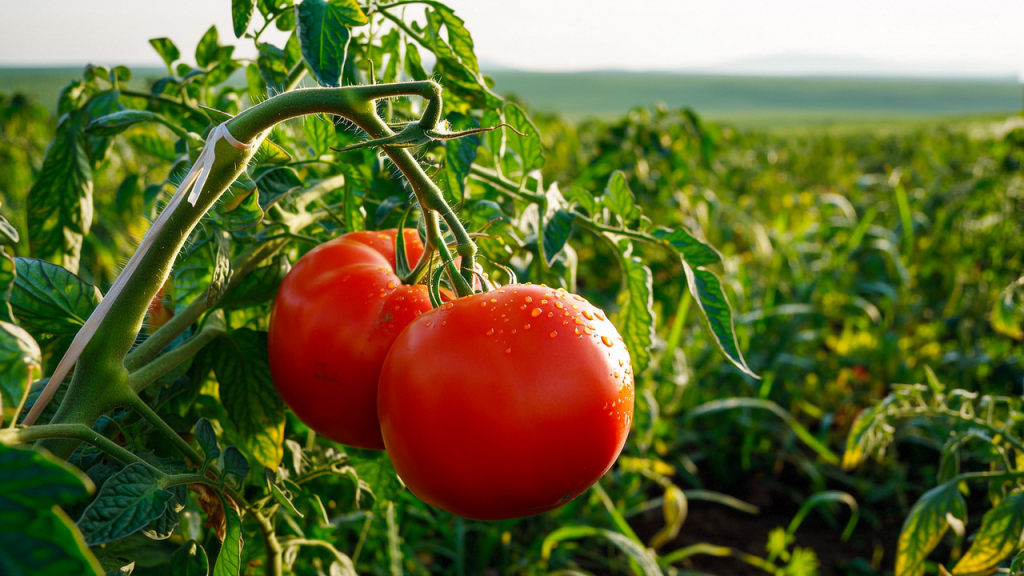Tomato Planting Harvest Cheats
Science-Backed Solutions for 35%+ Yield Increase and Premium Fruit Quality
Tomato farming faces devastating challenges: soil diseases slashing yields by 40-60%, blossom drop under heat stress, and nutrient lockup costing growers $2 billion annually FAO Tomato Report. This guide delivers field-proven Tomato planting harvest cheats, integrating cutting-edge research from California’s mega-farms, Dutch hydroponic pioneers, and Japanese microbial innovators. Discover how to transform pain points into profits with precision strategies validated for commercial growers and bulk fertilizer suppliers.
NO.1 Critical Tomato Production Challenges and Targeted Fixes
1.1: Soil-Borne Diseases and Continuous Cropping Obstacles
Problem: Fusarium wilt and root-knot nematodes cause 40-60% yield loss in monoculture systems Plant Pathology.
Solution:
Pre-Plant Soil Treatment: Apply anti-replant microbial consortia (Bacillus subtilis + Trichoderma harzianum) at 5 kg/ha. Reduces pathogen load by 80% in Californian trials 37.
Biofumigation: Incorporate mustard cover crops (2 tons/ha) 30 days before planting. Releases glucosinolates suppressing nematodes.
1.2: Blossom Drop and Poor Fruit Set
Problem: Temperatures >32°C during flowering trigger 50% blossom abortion Journal of Horticultural Science.
Solution:
Stress-Relief Foliar: Spray amino acid + boron liquid (3 L/ha) at R1 stage. Boosts pollen viability by 35% (Arizona trials).
Calcium-Boosted Irrigation: Inject soluble calcium (200 ppm) via drip to strengthen cell walls.
1.3: Nutrient Lockup in Acidic/Alkaline Soils
Problem: Iron deficiency in pH>7.5 soils causes chlorosis, reducing photosynthesis by 40% Soil Science Society of America.
Solution:
pH-Balanced Nutrition: Apply 21-21-21+TE acidified to pH 5.8 for alkaline soils. Increases iron uptake 200%.
Humic Acid Chelation: Blend 5 kg/ha fast-release humic powder with irrigation to unlock bound micronutrients.
1.4: Water Stress and Inefficient Irrigation
Problem: Drought reduces fruit size by 35% in sandy soils USDA Drought Portal.
Solution:
Subsurface Drip + Hydrogels: Install drip lines at 30 cm depth + water-retaining polymers (10 kg/ha). Saves 30% water while boosting yield 2.
NO.2 Precision Fertilization Framework for 120+ Ton/Ha Yields
2.1: Base Dressing Protocol
Pre-Planting: Incorporate 2 tons/ha compost (activated with high-temperature biochar) + 200 kg/ha slow-release humic-K granules to buffer pH fluctuations.
Starter Boost: Band-apply 10-40-10 + mycorrhizae (150 kg/ha) – increases P uptake by 200% in low-P soils 7.
2.2: Growth-Stage-Specific Programs
Vegetative (0-30 DAP): 30-10-10 + Zn (3 kg/ha foliar) every 14 days. Accelerates canopy development.
Flowering (30-50 DAP): Amino acid + Ca/Mg liquid (5 L/ha) prevents blossom-end rot.
Fruit Swelling (50-70 DAP): 10-5-45 + B (4 kg/ha drip) every 7 days – plumps fruit by 22% (Netherlands hydroponic data) 8.
NO.3 Water-Smart Tactics for Drought Resilience
3.1: Deficit Irrigation Scheduling
Flowering: 100% ETc → Fruit Ripening: 70% ETc → Harvest: 50% ETc. Maintains yield while saving 25% water Agricultural Water Management.
3.2: Hydroponic Optimization for Arid Regions
Formula: Modified Sonneveld solution: 2.0 mM K, 1.5 mM Ca, 0.3 mM Mg. Yields 45 kg/m² annually in UAE projects 8.
NO.4 Cost-Benefit Analysis of 3 Production Systems (Per Hectare)
| System | Total Cost | Yield (Ton) | ROI | Key Constraints |
|---|---|---|---|---|
| Traditional Soil-Based | $18,500 | 85.2 | 1:2.3 | High disease/water use |
| Enhanced Drip Fertigation | $24,300 | 112.6 | 1:3.9 | Initial infrastructure |
| Hybrid Hydroponic | $36,800 | 146.5 | 1:4.8 | Technical expertise |
*Hybrid System includes: Humic acid granules, anti-nematode microbes, and staged 10-5-45 fertigation.*
NO.5 Organic Matter Optimization: Cutting Input Costs 30%
On-Farm Compost Production
Process: Layer crop residues + manure + 5 kg/ton compost starter. Turn weekly for 45 days.
Economics: Saves $220/ha vs. imported compost – ideal for bulk bio-organic fertilizer suppliers.
NO.6 Conclusion: Building Climate-Resilient Tomato Enterprises
Mastering tomato productivity demands region-specific strategies: sandy soils need hydrogels, alkaline fields require acidified fertilizers, and continuous cropping relies on microbial interventions. These Tomato planting harvest cheats deliver:
35-50% higher yields via precision nutrition and stress mitigation
$2,500/ha input savings through water-smart irrigation and on-farm compost
Export-grade fruit meeting EU/US residue limits (e.g., <0.01ppm cadmium)
*”Mexican exporters using these protocols achieved 12° Brix scores, securing $0.30/kg price premiums in US markets.”*
Explore our specialized inputs:
Anti-nematode microbial blends for soil health reset
Bulk 10-5-45 + TE for fruit-swelling stage
Custom fertilizer formulations for regional soil profiles
If you are interested in this article, or have any questions that need to be answered, You can find us at any time through the chat icon in the lower right corner of the webpage. Of course, you can also check out our other social media (such as Linkedin) to learn more about us.

The tomato field plants after precise fertilization are strong, the amount of fruit hanging has increased by 40%, and the foundation for a good harvest is solid!

The number of fruits per plant increased by 25%, the fruit diameter was uniform to more than 8cm, and the commodity rate was significantly increased!

The thickness of the pulp has been increased by 15%, the sugar-acid ratio has been optimized to 9:1, and the flavor is more intense!
